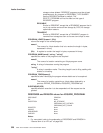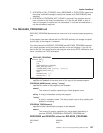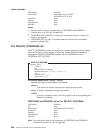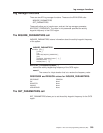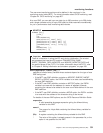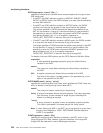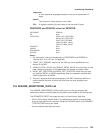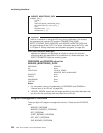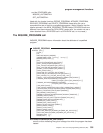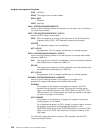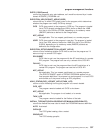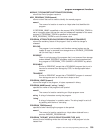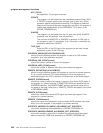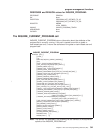
INQUIRE_MONITORING_DATA
DFHMNMNX [CALL,]
[CLEAR,]
[IN,
FUNCTION(INQUIRE_MONITORING_DATA),
DATA_BUFFER(buffer-descriptor),]
[OUT,
RESPONSE(name1 | *),
REASON(name1 | *)]
Important
There is a restriction in using the XPI early during initialization. Do not start
exit programs that use the XPI functions TRANSACTION_DUMP,
WRITE_JOURNAL_DATA, MONITOR, and INQUIRE_MONITOR_DATA until
the second phase of the PLTPI. For further information about the PLTPI, refer
to “Chapter 4. Writing initialization and shutdown programs” on page 393.
DATA_BUFFER(buffer-descriptor)
specifies the address and the length of a buffer to contain the returned
monitoring data; see page 299 for a full definition of a buffer-descriptor. The
DSECT DFHMNTDS maps the monitoring data.
RESPONSE and REASON values for
INQUIRE_MONITORING_DATA:
RESPONSE REASON
OK None
EXCEPTION LENGTH_ERROR
MONITOR_DATA_UNAVAILABLE
DISASTER None
INVALID None
KERNERROR None
PURGED None
Notes:
1. For more detail, refer to the explanation of RESPONSE and REASON in
“General form of an XPI call” on page 286.
2. ‘LENGTH_ERROR’ means that the length specified in the buffer-descriptor was
too short for the monitoring data returned from the XPI call.
Program management functions
There are eight XPI program management functions. These are the DFHPGISX
calls:
INQUIRE_PROGRAM
INQUIRE_CURRENT_PROGRAM
SET_PROGRAM
START_BROWSE_PROGRAM
GET_NEXT_PROGRAM
END_BROWSE_PROGRAM
monitoring functions
334
CICS TS for OS/390: CICS Customization Guide



